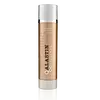What's inside
What's inside
 Key Ingredients
Key Ingredients

 Benefits
Benefits

 Concerns
Concerns

 Ingredients Side-by-side
Ingredients Side-by-side

Water
Skin ConditioningSqualane
EmollientGlycerin
HumectantNiacinamide
SmoothingSodium Acrylates Copolymer
Thermus Thermophillus Ferment
Skin ConditioningTranexamic Acid
AstringentGlucosyl Hesperidin
HumectantSilybum Marianum Extract
Skin ConditioningWithania Somnifera Root Extract
Skin ConditioningLactoferrin
Skin ConditioningPlankton Extract
Skin ConditioningTremella Fuciformis Sporocarp Extract
AntioxidantPancratium Maritimum Extract
BleachingDunaliella Salina Extract
Skin ConditioningPentasodium Tetracarboxymethyl Acetylhydroxyprolyl Dipeptide-12
Skin ConditioningHexapeptide-11
Skin ConditioningHexapeptide-12
Skin ConditioningPentasodium Tetracarboxymethyl Dipeptide-51
Skin ConditioningPhosphatidylserine
Emulsion StabilisingDiglucosyl Gallic Acid
Phospholipids
Skin ConditioningFructose
HumectantBetaine
HumectantAscorbyl Palmitate
AntioxidantPropanediol
SolventLecithin
EmollientCaprylyl Methicone
Skin ConditioningDimethicone
EmollientMannitol
HumectantPhosphatidylcholine
Emulsifying1,2-Hexanediol
Skin ConditioningCetyl Alcohol
EmollientXanthan Gum
EmulsifyingTocopherol
AntioxidantCitric Acid
BufferingHelianthus Annuus Seed Oil
EmollientDecyl Glucoside
CleansingCaprylyl Glycol
EmollientEthylhexylglycerin
Skin ConditioningCaprylhydroxamic Acid
Potassium Sorbate
PreservativeSodium Benzoate
MaskingPhenoxyethanol
PreservativeSodium Chloride
MaskingSilica
AbrasiveCI 77891
Cosmetic ColorantWater, Squalane, Glycerin, Niacinamide, Sodium Acrylates Copolymer, Thermus Thermophillus Ferment, Tranexamic Acid, Glucosyl Hesperidin, Silybum Marianum Extract, Withania Somnifera Root Extract, Lactoferrin, Plankton Extract, Tremella Fuciformis Sporocarp Extract, Pancratium Maritimum Extract, Dunaliella Salina Extract, Pentasodium Tetracarboxymethyl Acetylhydroxyprolyl Dipeptide-12, Hexapeptide-11, Hexapeptide-12, Pentasodium Tetracarboxymethyl Dipeptide-51, Phosphatidylserine, Diglucosyl Gallic Acid, Phospholipids, Fructose, Betaine, Ascorbyl Palmitate, Propanediol, Lecithin, Caprylyl Methicone, Dimethicone, Mannitol, Phosphatidylcholine, 1,2-Hexanediol, Cetyl Alcohol, Xanthan Gum, Tocopherol, Citric Acid, Helianthus Annuus Seed Oil, Decyl Glucoside, Caprylyl Glycol, Ethylhexylglycerin, Caprylhydroxamic Acid, Potassium Sorbate, Sodium Benzoate, Phenoxyethanol, Sodium Chloride, Silica, CI 77891
Ingredients Explained
These ingredients are found in both products.
Ingredients higher up in an ingredient list are typically present in a larger amount.
Glycerin is already naturally found in your skin. It helps moisturize and protect your skin.
A study from 2016 found glycerin to be more effective as a humectant than AHAs and hyaluronic acid.
As a humectant, it helps the skin stay hydrated by pulling moisture to your skin. The low molecular weight of glycerin allows it to pull moisture into the deeper layers of your skin.
Hydrated skin improves your skin barrier; Your skin barrier helps protect against irritants and bacteria.
Glycerin has also been found to have antimicrobial and antiviral properties. Due to these properties, glycerin is often used in wound and burn treatments.
In cosmetics, glycerin is usually derived from plants such as soybean or palm. However, it can also be sourced from animals, such as tallow or animal fat.
This ingredient is organic, colorless, odorless, and non-toxic.
Glycerin is the name for this ingredient in American English. British English uses Glycerol/Glycerine.
Learn more about GlycerinSodium Benzoate is a preservative. It's used in both cosmetic and food products to inhibit the growth of mold and bacteria. It is typically produced synthetically.
Both the US FDA and EU Health Committee have approved the use of sodium benzoate. In the US, levels of 0.1% (of the total product) are allowed.
Sodium benzoate works as a preservative by inhibiting the growth of bacteria inside of cells. It prevents the cell from fermenting a type of sugar using an enzyme called phosphofructokinase.
It is the salt of benzoic acid. Foods containing sodium benzoate include soda, salad dressings, condiments, fruit juices, wines, and snack foods.
Studies for using ascorbic acid and sodium benzoate in cosmetics are lacking, especially in skincare routines with multiple steps.
We always recommend speaking with a professional, such as a dermatologist, if you have any concerns.
Learn more about Sodium BenzoateWater. It's the most common cosmetic ingredient of all. You'll usually see it at the top of ingredient lists, meaning that it makes up the largest part of the product.
So why is it so popular? Water most often acts as a solvent - this means that it helps dissolve other ingredients into the formulation.
You'll also recognize water as that liquid we all need to stay alive. If you see this, drink a glass of water. Stay hydrated!
Learn more about WaterXanthan gum is used as a stabilizer and thickener within cosmetic products. It helps give products a sticky, thick feeling - preventing them from being too runny.
On the technical side of things, xanthan gum is a polysaccharide - a combination consisting of multiple sugar molecules bonded together.
Xanthan gum is a pretty common and great ingredient. It is a natural, non-toxic, non-irritating ingredient that is also commonly used in food products.
Learn more about Xanthan Gum